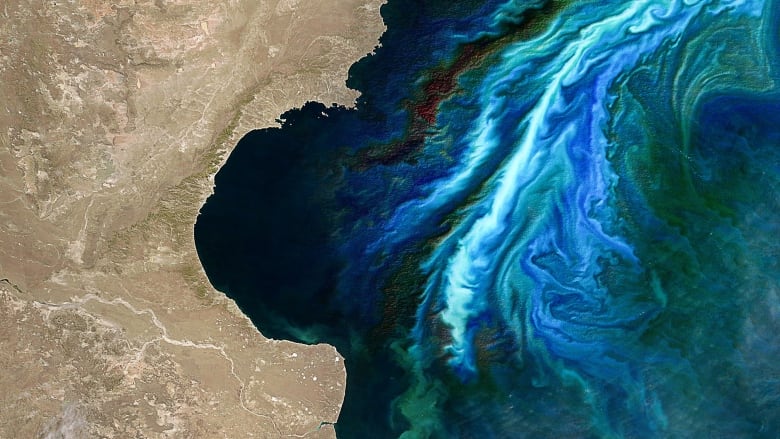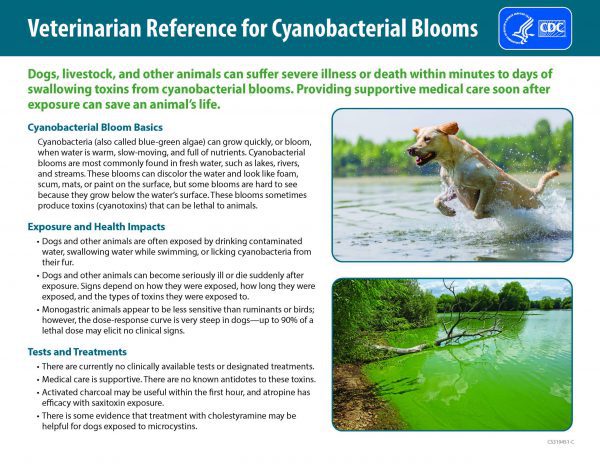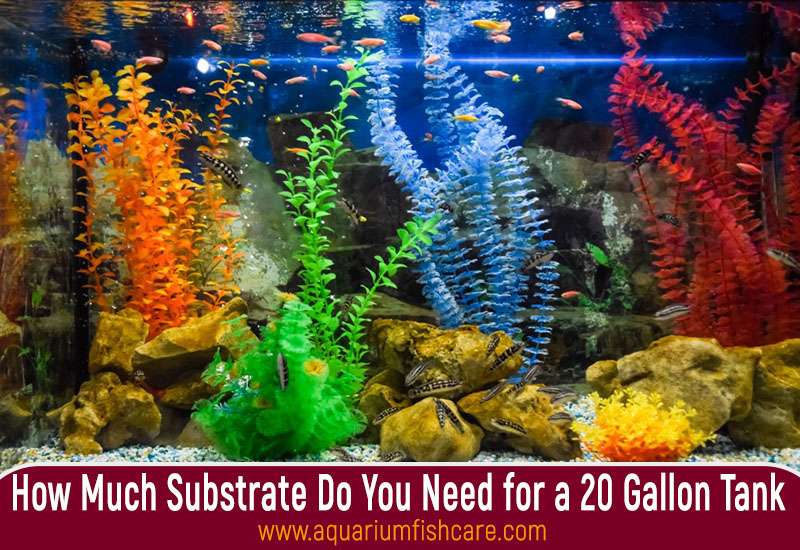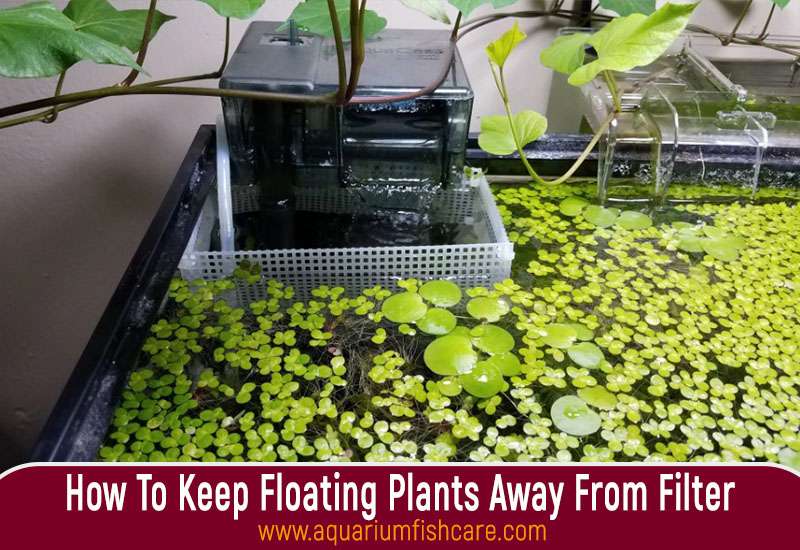Algae can typically grow within a week to a couple of weeks, depending on the conditions. Algae growth is influenced by various factors such as temperature, nutrients, and light.
Under favorable conditions, algae can start growing within a short time frame, usually ranging from a week to a couple of weeks. Factors such as the presence of nutrients, light availability, and water temperature play a crucial role in the proliferation of algae.
The rapid growth of algae is often observed in environments where these conditions are optimal. Understanding the mechanisms and speed of algae growth is essential for various applications, including aquatic ecology, aquaculture, and biofuel production. By controlling the environmental factors, it is possible to influence the timing and rate of algae growth for different purposes.
Factors Affecting Algae Growth
Algae growth can be influenced by various factors such as nutrients in the water, water temperature and pH levels, and light availability. Understanding these factors is crucial in managing and controlling algae growth effectively.
Nutrients In The Water
The presence of nutrients like phosphorus and nitrogen in the water plays a significant role in the growth of algae. Excess amounts of these nutrients can lead to the rapid proliferation of algae species, forming thick algal blooms.
Water Temperature And Ph
Optimal water temperature and pH levels are essential for the healthy growth of algae. Changes in these parameters can impact the growth rate of algae species, with different types thriving in specific temperature and pH ranges.
Light Availability
Light is a critical factor for photosynthesis in algae, enabling them to produce energy for growth. Inadequate light can hinder algae growth, while excessive light exposure can also have negative effects on certain algae species.
“` This HTML content presents an engaging section discussing the factors affecting algae growth. It covers the importance of nutrients, water temperature, pH levels, and light availability in influencing algae proliferation. Each subheading is formatted in HTML syntax with bold text highlighting key points for better readability and understanding.
Timeline Of Algae Growth
Algae growth is a natural process that occurs in various environments, including ponds, aquaria, and even in fuel production. The timeline of algae growth can vary depending on the specific conditions and type of algae. In this article, we will explore the timeline of algae growth in pond water, green algae growth in aquaria, and macroalgae growth rate.
Algae Appearance In Pond Water
Algae can start appearing in pond water within a few weeks or even days, depending on various factors. These factors include water temperature, nutrient levels, sunlight exposure, and the presence of other microorganisms. Generally, it takes around 2 to 4 weeks for the first signs of algae growth to appear in pond water.
As the algae growth progresses, you may notice the water turning green or brownish in color. This is due to the multiplication of algae cells, and it indicates a higher concentration of algae in the pond. The appearance of algae in pond water is a natural occurrence that can provide food and habitat for aquatic organisms, but excessive algae growth can lead to imbalances in the ecosystem.
Green Algae Growth In Aquaria
In aquaria, green algae growth can occur within a shorter timeframe compared to pond water. When the aquarium is set up, it may take around 1 to 2 weeks for green algae to start forming on the surfaces, including glass, rocks, and substrate. This initial growth is often seen as a thin layer or patches.
As green algae growth continues, it can become more visible and cover larger areas of the aquarium. This growth can be stimulated by factors such as high levels of organic waste, excess light exposure, and imbalanced nutrient levels. Regular maintenance and proper aquarium care can help control the growth of green algae and maintain a healthy aquatic environment.
Macroalgae Growth Rate
The growth rate of macroalgae, also known as seaweed, can vary depending on the species and environmental conditions. Macroalgae can take several weeks to months to reach their full maturity. Some fast-growing species can reach their maximum size within a few weeks, while slower-growing macroalgae may take several months.
The growth rate of macroalgae can be influenced by factors such as water temperature, nutrient availability, light intensity, and water flow. These factors interact with each other to determine the overall growth rate of the macroalgae. It is important to provide optimal conditions for macroalgae growth in order to maintain a healthy and vibrant marine aquarium.
In conclusion, the timeline of algae growth varies depending on the specific environment and type of algae. Understanding the timeline of algae growth can help aquarists and pond owners maintain a balanced ecosystem and take appropriate measures to control excessive algae growth.
Algae Cultivation Techniques
The process of cultivating algae involves various techniques depending on the purpose it serves. Whether it’s for sea-monkeys, aquariums, or fuel production, each method requires specific conditions and care. In this section, we will explore these algae cultivation techniques in detail.
Live Algae For Sea-monkeys
One popular use of algae cultivation is for feeding sea-monkeys, or brine shrimp. These tiny, aquatic creatures thrive on a diet of live microalgae. Culturing live algae for sea-monkeys involves several steps, such as mixing saltwater, heating the water, and providing light for photosynthesis. By following the right procedures, you can ensure the healthy growth of algae to feed your sea-monkeys.
Algae Culturing For Aquarium Use
Another common application of algae cultivation is for aquariums. While algae can sometimes become a nuisance in aquariums, it can also play a beneficial role in maintaining the ecosystem. Controlling algae growth in aquariums involves understanding nutrient levels, lighting conditions, and dosing macronutrients properly. By implementing the right practices, you can maintain a healthy aquarium environment without excessive algae growth.
Algae Production For Fuel
Algae has also gained attention for its potential as a renewable source of fuel. Algae-based biofuels have shown promise in reducing greenhouse gas emissions and offering an alternative to fossil fuels. To produce algae for fuel, special techniques are utilized, such as using LEDs for optimal growth and controlling nutrient levels. These methods aim to maximize algae production and ensure its suitability for fuel production.

Credit: wi.mit.edu
Preventing And Managing Algal Blooms
Algae can grow within a week to a couple of weeks, depending on the desired level of growth. Factors such as nutrient levels and environmental conditions play a role in the speed at which algae forms.
Causes Of Algal Blooms
Nutrients like phosphorus and nitrogen in excess can lead to the formation of thick layers of algae, known as algal blooms. Sources of these nutrients include fertilizers, pet waste, and yard waste.
Algae Control In Pools
To prevent algae growth in pools, maintaining proper circulation, filtration, and sanitation levels is crucial. Regular use of high-quality pool algaecide can help prevent algae from taking hold.
Environmental Impact Of Algal Blooms
Algal blooms have a negative impact on the environment, affecting water quality and aquatic life. It is vital to manage nutrient levels to prevent the overgrowth of algae and maintain a healthy ecosystem.
Applications Of Algae Growth
Algae growth can take from a week to a couple of weeks, depending on the desired level. Factors such as light, nutrients, temperature, and pH levels need to be carefully monitored to enhance the growth process efficiently. Algae can form thick layers in a short time, especially when there’s an excess of nutrients in the water.
Algae Turf Scrubber
Algae turf scrubbers (ATS) are a water treatment technology that utilizes the rapid growth of algae to remove nutrients and pollutants from wastewater. This process involves cultivating a dense mat of algae on a screen or mesh, which is then periodically harvested and removed. The harvested algae can be used as a source of renewable energy, such as biofuel production, or as a high-protein feed for livestock and aquaculture. Algae turf scrubbers are considered a sustainable and cost-effective solution for improving water quality in various industries, including agriculture, wastewater treatment plants, and aquaculture facilities.
Algae In Coral Reef Ecosystems
Algae play a crucial role in coral reef ecosystems by providing food and habitat for a wide range of marine organisms. In these ecosystems, algae can be found in various forms, including microalgae, macroalgae, and benthic algae. Microalgae, such as diatoms and cyanobacteria, are an essential food source for coral polyps and other reef inhabitants. They also contribute to reef-building processes by producing calcium carbonate, which helps form the skeletons of corals and other reef organisms. Macroalgae, on the other hand, are larger seaweeds that can either be beneficial or detrimental to coral reefs. While some macroalgae provide food and shelter for reef fish and invertebrates, excessive growth of certain species can outcompete corals for space and light, leading to a decline in coral cover and diversity. Understanding the dynamics of algae growth in coral reef ecosystems is crucial for maintaining the delicate balance between corals and algae and preserving the health and resilience of these biodiverse habitats.
Macroalgae For Water Quality Improvement
Macroalgae, also known as seaweeds, are not only essential components of marine ecosystems but can also be utilized for water quality improvement. These fast-growing algae are known for their ability to uptake and store excess nutrients, such as nitrogen and phosphorus, which can contribute to water pollution. By cultivating macroalgae in water bodies such as lakes, rivers, and coastal areas, we can help mitigate the negative impacts of nutrient pollution. The algae absorb the nutrients, effectively reducing their availability for potentially harmful algal blooms and improving water quality. In addition to nutrient removal, macroalgae also provide a range of ecosystem services, including oxygen production, carbon sequestration, and habitat provision for a variety of marine organisms. This makes them a valuable tool for sustainable water management and ecological restoration efforts. In conclusion, the growth of algae has various applications in different fields, including water treatment, coral reef conservation, and water quality improvement. Harnessing the potential of algae can contribute to a more sustainable and environmentally friendly approach to resource management. Whether it’s using algae turf scrubbers to treat wastewater or cultivating macroalgae to enhance water quality, the potential benefits of algae growth are vast. By understanding and harnessing the power of algae, we can pave the way for a greener and cleaner future.

Credit: www.cbc.ca
Fastest Rate Of Algae Growth
Algae can grow at a rapid rate, taking only a week or a couple of weeks to develop, depending on conditions. Factors such as nutrients, temperature, light, and carbon dioxide levels influence the speed of algae growth.
Speeding Up Algae Growth
In the quest to accelerate the growth of algae, it’s crucial to understand the factors that contribute to its rapid development. With the right conditions and care, it’s possible to achieve an impressive rate of algae growth. Let’s delve into the key aspects that influence the pace of algae propagation.
Factors Affecting Growth Speed
Several factors play a pivotal role in determining the speed of algae growth. These include temperature, light exposure, nutrient availability, and pH levels. Each of these elements can significantly impact the rate at which algae proliferates. Establishing optimal conditions for these factors can expedite the growth process.
Increasing Algae Growth In Tanks
When cultivating algae in tanks, certain strategies can be employed to boost its growth rate. These may involve providing sufficient light to facilitate photosynthesis, regulating nutrient levels to ensure an abundant supply, and maintaining consistent temperature and pH levels. By optimizing these parameters, it’s possible to create an environment that fosters rapid algae growth within tanks.
Understanding Algae Life Cycle
Algae, like all living organisms, go through various stages in their life cycle. It is crucial to understand these stages to comprehend the growth patterns of algae.
Generative And Vegetative Phases
The life cycle of algae consists of generative and vegetative phases. During the generative phase, algae reproduce sexually through the formation of spores or gametes. In the vegetative phase, algae multiply asexually through cell division.
Unicellular Algae Life Cycle
Unicellular algae, such as Chlorella and Diatoms, have a simple life cycle. They reproduce rapidly through cell division, leading to quick growth and proliferation in suitable environments.
Duration Of Different Algae Life Cycles
The duration of algae life cycles varies based on species and environmental conditions. Some algae species can go from germination to maturation in just a few days, while others may take weeks or even months.

Credit: www.cdc.gov
Frequently Asked Questions Of How Long Does It Take For Algae To Grow
How Long Does It Take For Algae To Appear?
Algae can appear in a few hours to a couple of weeks when conditions favor nutrient buildup.
Can Algae Grow In 24 Hours?
Algae can start to grow within 24 hours under the right conditions.
How Long Does Algae Take To Form In A Pool?
Algae can form in a pool in just a few hours on a warm summer day. Factors such as circulation, filtration, and sanitation levels can contribute to the growth of algae. Regularly using a high-quality pool algaecide can help prevent algae from taking hold.
How Does Algae Start Growing?
Algae starts growing when excess phosphorus and nitrogen nutrients accumulate in water, triggered by fertilizers and yard waste.
How Quickly Does Algae Start To Grow?
Algae can begin growing within days under favorable conditions such as light and nutrients.
What Factors Affect Algae Growth Speed?
Factors like light exposure, water temperature, and nutrient levels significantly influence algae growth.
Can Algae Grow Rapidly In A Pool?
Algae can proliferate rapidly in pools when conditions like warm temperatures and nutrient levels are ideal.
Conclusion
Algae growth varies depending on environmental factors. With proper conditions, algae can appear within a week. Controlling nutrients plays a vital role in algae formation. Understanding these processes can help in managing and preventing algae growth effectively. Keep these factors in mind for a healthy environment.


